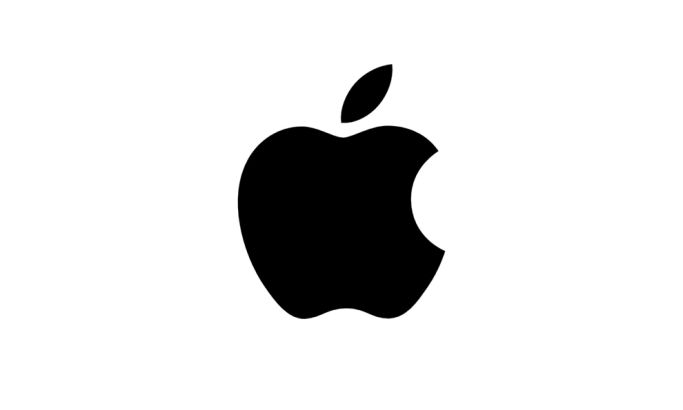Apple iPhone SE (2020) review: a cheap iPhone that feels premium in almost every way
The new iPhone SE nails the important stuff and gives you the build quality of an iPhone Pro for less than half the price

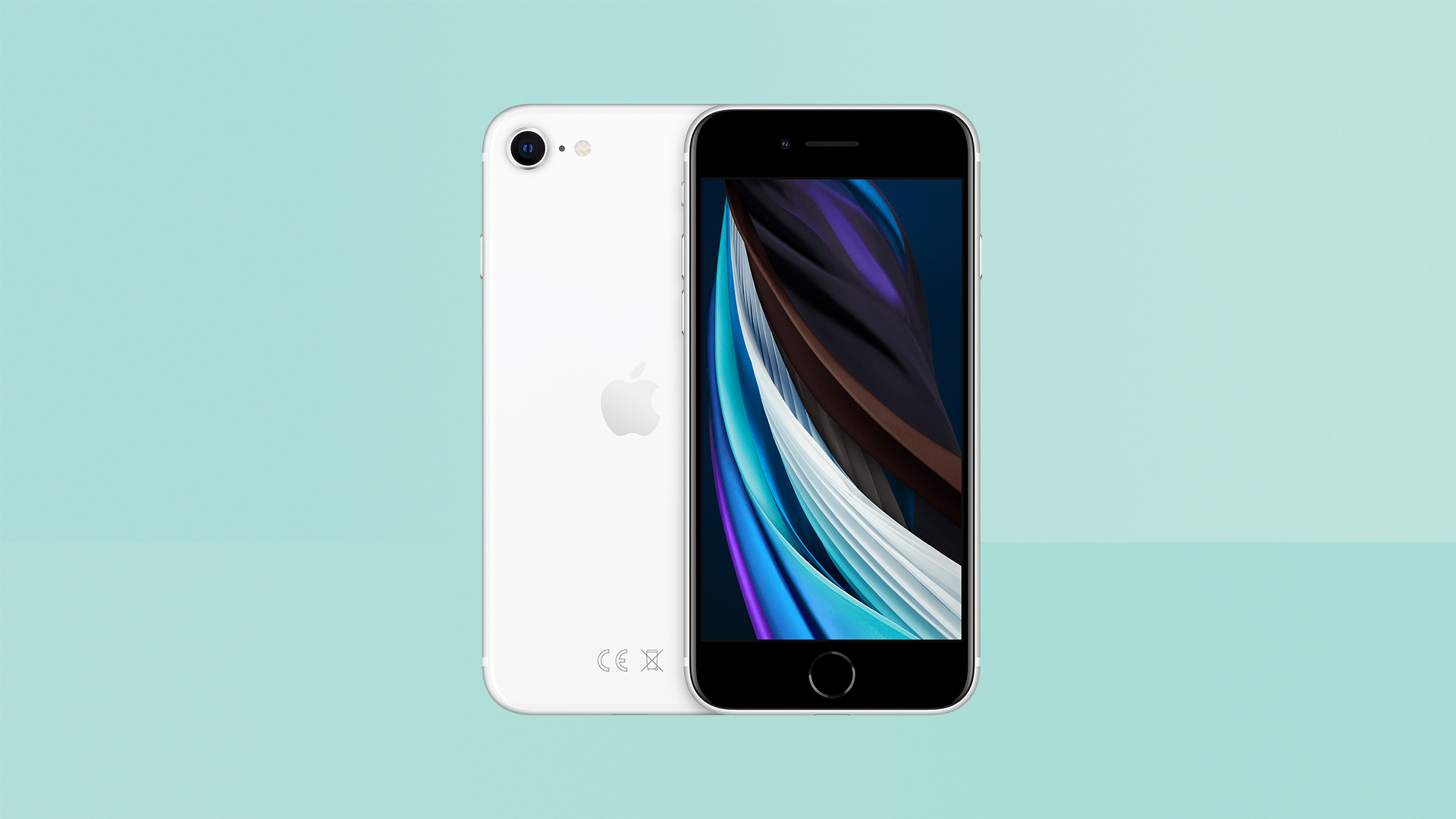
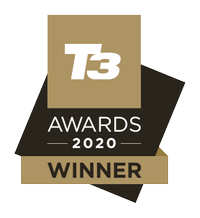
The iPhone SE 2020 is the best cheap smartphone for most people – its camera, build quality and speed all match more expensive phones. Its smaller screen will also please those who feel left behind by ever-larger devices.
-
+
Premium build
-
+
Excellent processor
-
+
Very impressive camera
-
+
Great value
-
+
Waterproof
-
-
Average battery life
-
-
No haptic touch on lock screen
-
-
No Night Mode in camera
Why you can trust T3

To sum up this iPhone SE (2020) review: this is still one of the best cheap phones you can buy in 2021 because it brings high-end features to a low-end price. We liked it so much that the Apple iPhone SE (2020) won Best Mid-Range Phone at the T3 Awards 2020.
The stroke of genius in the iPhone SE range is that it manages to cut a lot of costs without feeling like it has – you get a full-fat iPhone experience (just about), powered by the latest processor that's also found in the iPhone 11 Pro and iPhone 11.
Not only does that chip make the iPhone SE (2020) speedy, capable and efficient, it also helps to boost the quality of shots from the camera by packing in advanced image processing to improve detail and colour reproduction.
You can see how the iPhone SE stacked up against some of the other older iPhones here iPhone SE vs iPhone 11 vs iPhone XR.
The three main things people tend to want from a new phone are for it to respond quickly, for it to get better battery life, and for it to take good shots – so let's dig into just how well the iPhone SE achieves those, as well as everything else you need to know about it.
Our thanks to Vodafone for supplying our review unit.
Apple iPhone SE (2020) review: Price and design
The iPhone SE (2020) starts from £419/$399 SIM-free with 64GB of storage. You can step up to 128GB of storage for £469/$449, or to 256GB for £569/$549.
Get all the latest news, reviews, deals and buying guides on gorgeous tech, home and active products from the T3 experts
Apple offers 0% interest payment instalments at its online store, so you can get the phone SIM-free and save some money, but without needing to pay everything upfront. It's the cheapest way to get the new iPhone, and we recommend it if you're happy find your own SIM-only deal to use with it (or are keeping an old SIM).
• See Apple UK's payment options for the iPhone SE
• See Apple US's payment options for the iPhone SE
For more casual users, the basic 64GB version should be fine. For someone who takes a ton of photos, or who'll download a lot of games to play or movies to watch, the step up to 128GB is a very good move, and makes a ton of sense for a small extra cost. That would be my choice.
The 256GB version feels a little overkill for most people this phone is aimed at – it starts to nudge more towards the mid-range rather than the cheap-end for price. But if you really love to take video and play games and don't want to spend any more than this, it's the one to get.
When it comes to design, the iPhone SE gets its looks and build straight from the iPhone 8, which means it feels just as premium as any other iPhone. This isn't like buying a cheap-o phone and getting something plasticky – from the moment you start unpacking it from the box, the glass and aluminium body, and pristine joins and finish, feel like something that costs a lot more.
It actually feels even denser than the iPhone 11 Pro, which only adds to the premium impression.
It comes in three colours: black, white and red. They all have a black screen and bezels on the front, but the matte aluminium metal sides and the glass back change colour. The black (which we had for testing) is the most uniform of these. The white has silver aluminium edges with the white back, while the red is also fairly uniform (and is a really dramatic, rich red).
In terms of size, it's the smallest iPhone by volume comfortably – it's smaller in every dimension than the iPhone 11 Pro, which is the next smallest. But because of the bezels, its overall physical size isn't quite as majorly different from that phone as you might think.
It's still noticeably smaller, though, and in the case of the screen particularly, that's important – we'll come to that in the next section.
At the bottom of the front is the Touch ID fingerprint sensor, which also functions as a Home button (although it isn't a physical button, which feels a bit odd).
At the top of the front is one of the two stereo speakers, plus the forward facing camera. On the sides, you've got a sleep/wake button, a mute switch and volume controls.
At the bottom is another speaker, plus the Lightning port, which is the sole physical connection – there's no 3.5mm headphone jack here. And it doesn't come with an adapter, so if you want to use traditional wired headphones, you'll need to buy one. It does comes with Apple's wired Lightning-connected headphones though, as well as a charging cable and wall plug.
The new SE is water-resistant at an IP67 rating, which means it can survive a dunking of a maximum depth of 1m for up to 30 mins. Basically, a drop into the bath shouldn't be a problem.

Apple iPhone SE (2020) review: Screen and speakers
The most important thing about the iPhone SE's screen is its size: at 4.7 inches, it's the smallest iPhone screen by a long way. This means it's the most usable for those with smaller hands – and is the only screen those with bigger hands can reach all over without repositioning.
We mentioned before that the overall size of the phone isn't that much smaller than the iPhone 11 Pro, but the screen size is majorly smaller. It is simply more usable with one hand, and the trade-off is a little bit of screen real-estate, and a tiny bit of scale.
Elements appear just a little smaller on the iPhone SE than they do on the bigger iPhones, but the difference isn't massive – and you can use iOS' accessibility controls to boost things like text size if you need to.
But the iPhone SE's screen is also less tall than the bigger iPhones, so you'll see fewer lines of text at the bottom of an website or document on the iPhone SE. We're not criticising it for that – it's a natural trade-off for a screen that's a more reachable size. It's just something to be aware off.
The screen otherwise is extremely close to what you get in the iPhone 11 or iPhone XR – the same maximum brightness, the same P3 wide colour gamut, the same contrast.
And it looks really great. The colours are accurate, it's good from basically all viewing angles, and the resolution of 750x1334 is sharp at over 300 pixels per inch.
It's LCD rather than OLED, so you don't get the super-rich contrast of the screen in the Google Pixel 3a, but we suspect most people who are the target market here won't mind too much about that. It's definitely nicer to have OLED's contrast for watching movies, but this works just fine for videos on Facebook or a quick episode of The Simpsons on Disney+.
The screen will wake itself up when you lift the phone, but not when you tap it (unlike other current iPhones).
The built-in speakers are pretty good, too – they can go loud without distorting, and when watching a video in landscape, you get a good sense of stereo separation.
They're a bit thin, lacking the more bassy end of things in particular for music and movies when compared to more expensive phones, but they do the job well, and are well suited to voices especially, which makes sense.
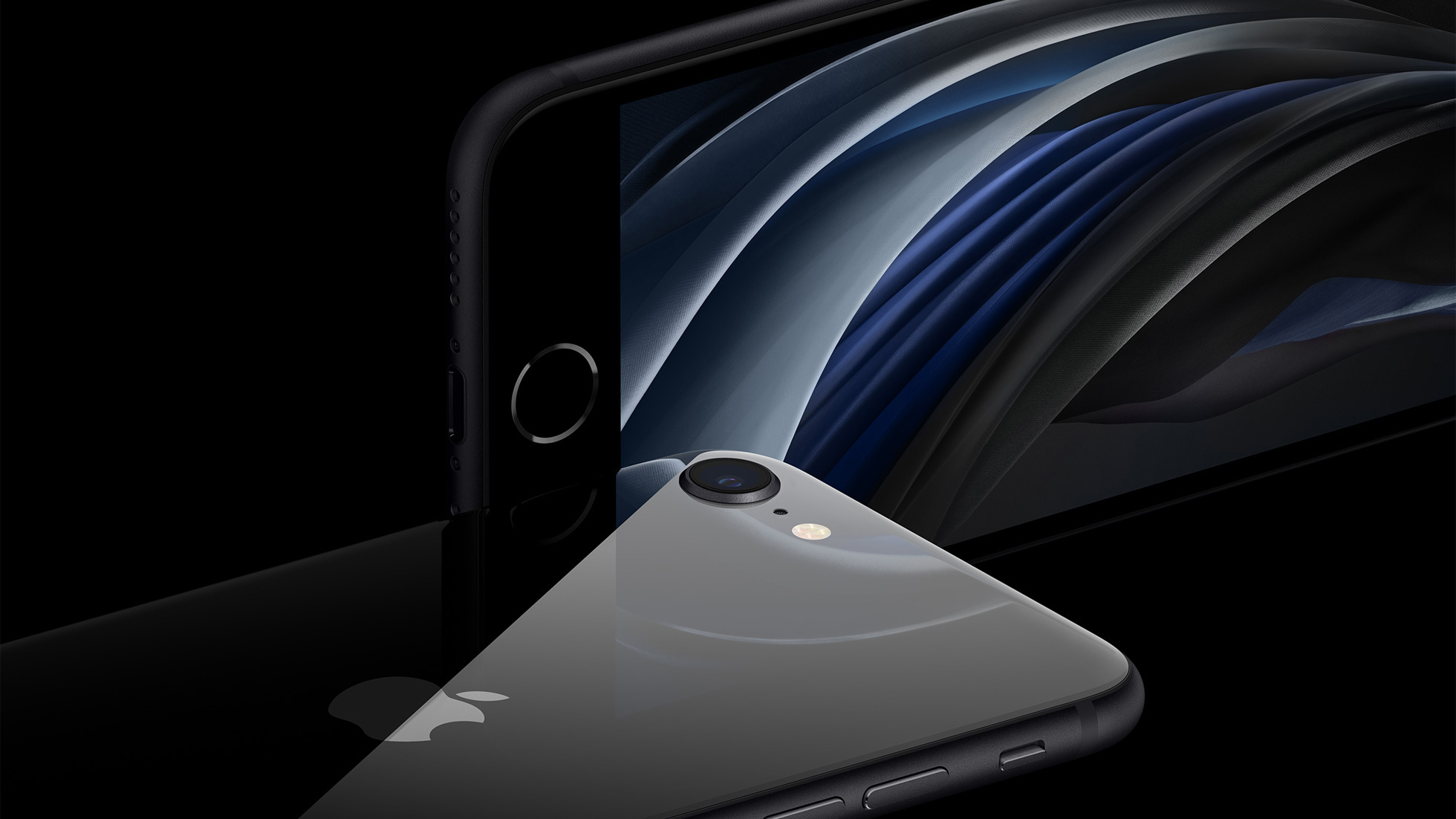
Apple iPhone SE (2020) review: Camera
The iPhone SE has a single-lens camera on the back, which Apple describes as the most advanced single-lens snapper on an iPhone ever.
It's a wide-angle lens (ie, the normal kind for smartphones) with a 12-megapixel sensor. That makes it sound like it may be on a technical par with the equivalent wide-angle cameras on the iPhone 11 and iPhone 11 Pro, but a teardown by iFixit has revealed that this isn't quite correct.
The iPhone SE has a smaller sensor than the iPhone 11 and the 11 Pro, despite having the same number of pixels. This has two effects: a smaller sensor receives less light, so won't be quite as strong a performer in dark conditions; and it also means that it will have a slightly different field of view than the iPhone 11 and 11 Pro's camera, because a larger sensor is mounted a different length from the lens. The angle thing isn't something we're worried about – we'll demonstrate it to you below, but it makes little real-world difference.
The sensor size is likely to make more of a real-world difference, but as we'll see, the fact that it's still an excellent sensor and is also backed up Apple's latest generation of image processor means that the end result – once the image has come off the sensor and been tweaked automatically in micro-seconds before you ever see it – are hugely impressive.
We gave it the hardest test possible, putting it up against the iPhone 11 Pro. Here are the results.
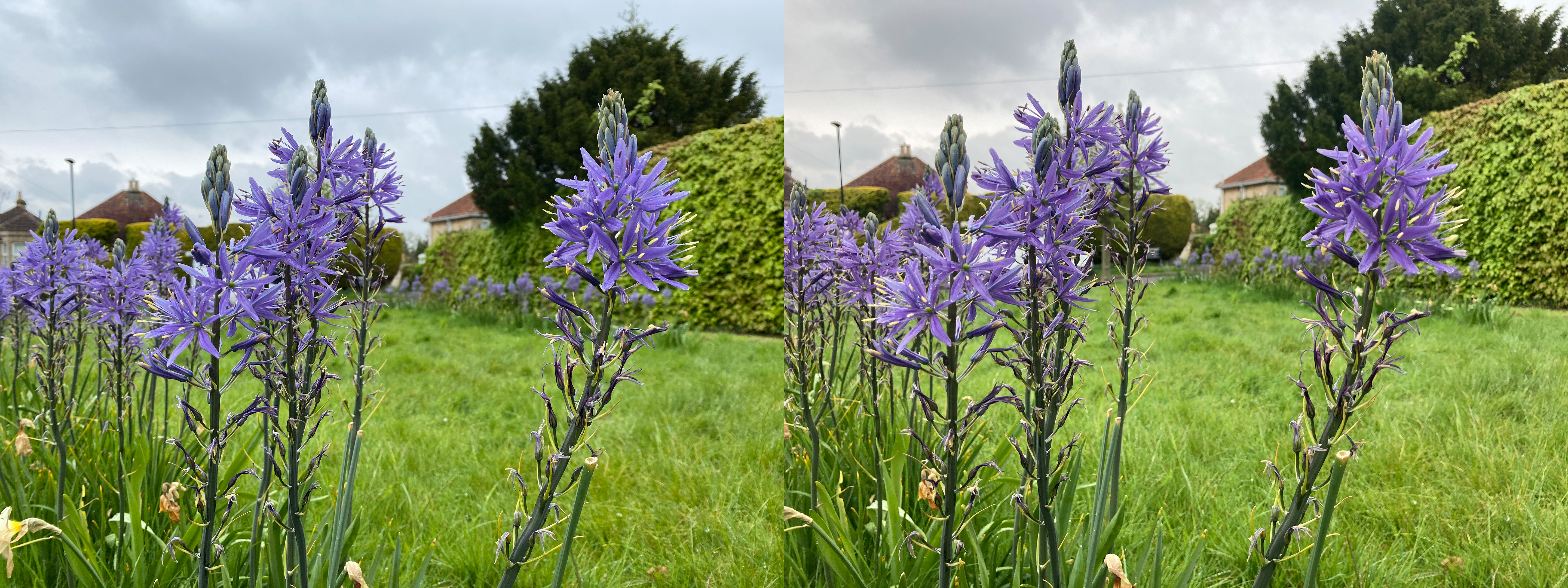
Left: iPhone 11 Pro. Right: iPhone SE (2020). See a larger version here.
The image above is a fairly typical of the difference between the two cameras. First, you might notice that the iPhone SE image is slightly more cropped into the view – that's the different field of view we mentioned above in action.
There are subtle differences across the two images in how colours are handled, most notably in the sky. The greens on the 11 Pro's picture are also a little more lush – there's a tad more saturation overall, and also a bit more dynamic range to give shadows and details more depth. You might also spot that the hedge on the right is blurrier on the 11 Pro's image – this isn't using any kind of Portrait Mode, so that's just a stronger natural bokeh.
But the main thing you're probably thinking is… they both look great. Both sharp, both natural. The 11 Pro's pic is a little better to our eyes, but not by much. If we want to see any real weakness, we have to jump to a 100% zoom.
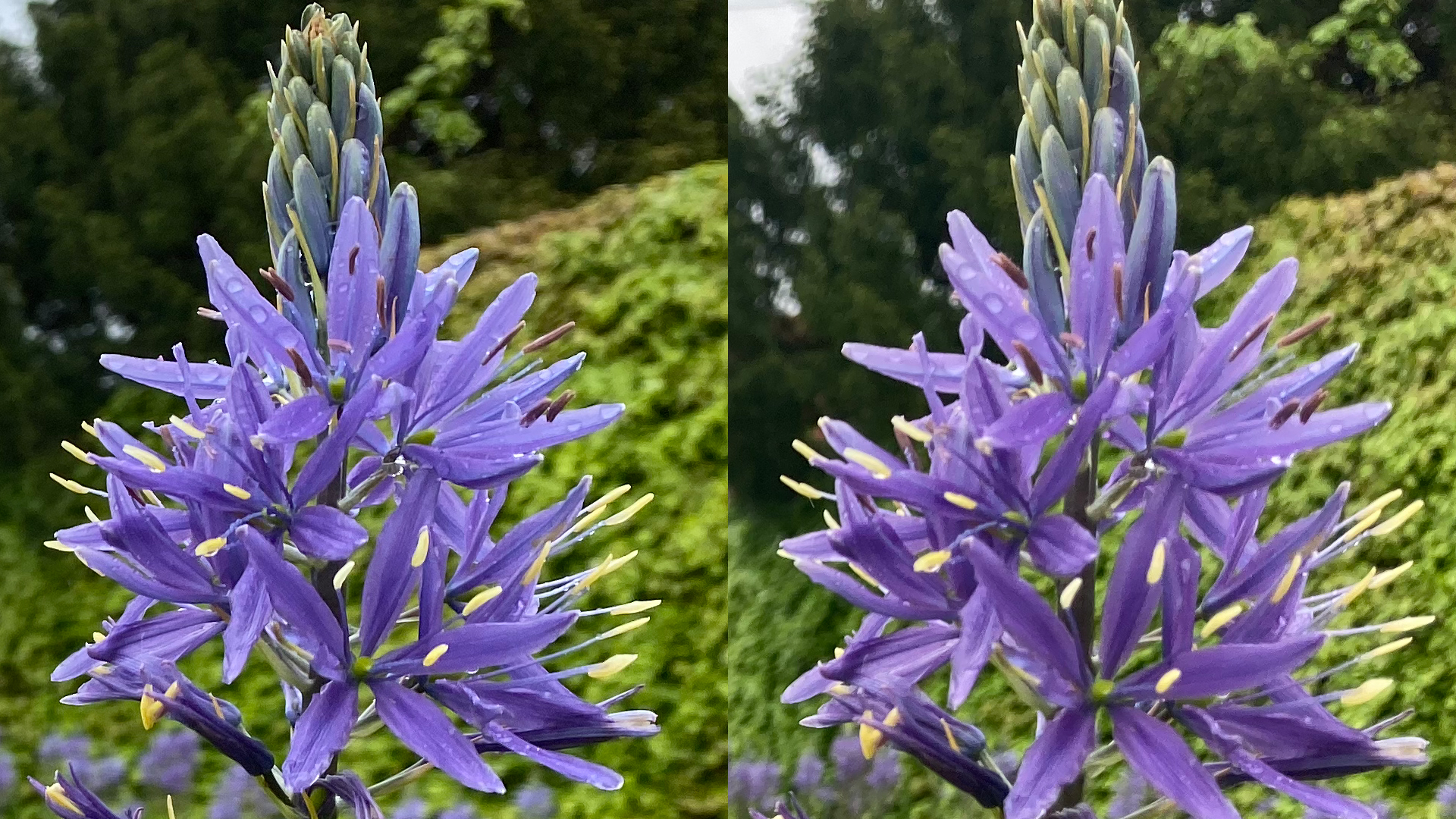
Left: iPhone 11 Pro. Right: iPhone SE (2020). View a version at 100% scale.
If we scale both pictures to a 100% view, we can see that the iPhone 11 Pro retains noticeably more sharpness and detail. The iPhone SE's picture is softer, and the reduced contrast makes the flower look less realistic and physical.
Now obviously, people don't tend to view a lot of photos at 100% – that we have to go this close to find a major distinction show how good a job the iPhone SE is doing. But with no zoom lens of any kind on the SE, people will find themselves cropping and zooming a fair bit, so it's useful to know where its limitations are in this area.
Here's another outdoors shot, and we challenge you to work out which photo is from which phone without looking at the caption…

Left: iPhone 11 Pro. Right: iPhone SE (2020). See a larger version.
The differences in the shot above are almost entirely academic. Again, the sky is treated differently, but it makes little difference to the quality. At full zoom, we were able to notice a bit of extra contrast in the 11 Pro's pic, along with some sharper blades of grass, but who really cares.
Stepping back indoors, we saw similar results to the flower picture.

Left: iPhone 11 Pro. Right: iPhone SE (2020). See a larger version.
The iPhone SE photo doesn't capture the individual fur as crisply and realistically as the 11 Pro does, and again a reduced dynamic range means the cat's black patches don't come out as richly dark as they do in real life.
It also hasn't been able to handle the colour balance from the backlighting quite as well – the white wall has a bit of a green hue on the SE's shot.
But would you be unhappy with the shot on the right? No, of course not. For a phone that's under half the price, these shots are excellent.
This was the trend across the many shots we took – in even outdoor lighting especially, it's really hard to tell the photos apart at all. In harder lighting, the SE starts to look weaker on contrast and colour balance, but still does an admirable job.
We also tested the Portrait Mode capabilities of the SE, of course. For this, we brought in the iPhone 11 as well as the iPhone 11 Pro, because that makes for the most interesting comparison.

Left: iPhone 11. Centre: iPhone 11 Pro. Right: iPhone SE. See a larger version.
The first thing you might notice above is that the centre image is a much more flattering framing than the other two, which both look like a little like I'm leering in towards the camera. That's because the iPhone 11 and iPhone SE both use a wide-angle lens for this kind of Portrait Mode shot, while the iPhone 11 Pro uses a 2x telephoto zoom lens.
As a result, taking this kind of portrait requires getting very close with the the SE and the 11, which means things start to look odd. Anything at the front of the face gets exaggerated, which is mainly the glasses and nose, and the forehead overtakes the hair a bit too. You don't get this problem if you step back more (which is why the 11 Pro doesn't have these issues, since the 2x zoom required our photographer to take several steps backwards while keeping the same framing) but this is a pretty standard framing for a nice portrait shot, so it's a valid comparison.
The important part is the quality, though, and all three are essentially on a par. The iPhone 11 and iPhone SE photos actually have marginally sharper details (noticeable in the beard) than the iPhone 11 Pro, which is likely due to the 11 Pro not being able to let as much light in its longer zoom lens.
The iPhone SE has a slightly cooler skin tone than the others, but again we likely wouldn't notice if we weren't placing them side by side. And the edge detection and background blurring is hugely impressive on all three.
One thing to note is that the iPhone 11 Pro can do Portrait Mode on effectively any subject, the iPhone 11 can do it on people and pets, but the iPhone SE can only do it on humans. You'll just have to take normal photos, sorry.
However, the iPhone SE also does Portrait Mode (of humans) from its front camera, too! Let's compare that to the iPhone 11 Pro again.

Left: iPhone 11 Pro. Right: iPhone SE (2020). View a version at 100% scale.
Hang on, is the iPhone SE picture here actually… better? The beard is a little more defined, and the blackness of the glasses is richer, and they look sharper. The iPhone 11 Pro has done a better job of recreating realistic depth of field as the hair and coat go further back, but you have to really look for that.
So when it comes to photos overall, we're thoroughly impressed by the iPhone SE. Yes, a much more expensive phone produces images that are better when forensically analysed, but for capturing a moment and sharing, this as good a camera as you could want on a budget phone.
The only disappointment is the lack of Night Mode. This is present on the iPhone 11 Pro and iPhone 11, and gets sharp, usable shots in lighting that the iPhone SE would be useless in.
The Google Pixel 3a, which is one of Apple's biggest rivals at this price, has its own equivalent (called Night Sight). While this feature alone isn't enough to sway us towards the Pixel 3a, we do think it's a significant check in its column.

Apple iPhone SE (2020) review: Performance & iOS
One of the most important things Apple has done with the iPhone SE is to put its latest and greatest phone processor in it. That's not because we're tech fans who insist on have the fastest stuff (though it's not not because of that…), but rather it's because it means Apple has built this phone to last.
Having Apple's A13 processor – the same chip that powers the iPhone 11 Pro – means that no matter what fancy new features are added to iOS in the coming years, this phone will be able to run it. And not just run it, but run it as fast and smoothly as Apple's flagship handset of the same vintage.
It's about future-proofing – this phone is set up to be a purchase that you can rely on for the several years without worrying about it slowing down horribly.
iPhone SE benchmarks
Geekbench 4
CPU single-core: 5450
CPU multi-core: 13775
GPU compute: 28672
Geekbench 5
CPU single-core: 1324
CPU multi-core: 3363
GPU compute: 6504
Based on benchmarks, this isn't just faster than cheaper Android phones… it's faster than flagship Android phones. It faster than, well, everything except the iPhone 11 and iPhone 11 Pro, which it's equal to.
What does this mean for you in the real world? In general use, it just means that the phone moves as quickly as you do. Tap to open an app and it loads instantly. Choose a big picture in Photos and you can zoom with no slow-down, and apply edits instantly. Webpages load as quickly as your internet allows. It just means that the phone is never a bottleneck for what you want to do.
It's great to know you can be as ambitious as you want with what you do on this phone, from 4K video editing to 3D models appearing in augmented reality, and it'll all just work.
The Touch ID fingerprint sensor works immediately too, and with the phone waking itself as soon as you pick it up, unlocking it is just a matter of putting a little pressure on that Home button, which is great.
We mentioned that the Home button feels a little odd – that because it's not a real button. When you apply pressure, a little motor under it creates the 'feel' of a clicking button. That's fine for giving feedback, but you can tell that nothing is actually moving when you 'press' the button. It's not a problem, but it takes a little getting used to.
Almost everything in iOS – Apple's software for its iPhones – works exactly the same here as it does on the more expensive iPhones, with one notable exception. On all current iPhones except the iPhone SE, when you have a notification on the Home screen, you can press and hold on that notification for a second to bring up an expanded version of the notification with more options.
This is really handy – I have a smart security camera, and I can just press a notification to see the snapshot of a motion warning, so I can decide to ignore a false alarm without unlocking my phone and going into an app.
When someone texts you, you can reply right from the lock screen. When an app sends overzealous notifications, you can mute them without going into any settings. There's a load of stuff this feature is useful for. It's also used for buttons to quickly open the camera or turn on the torch.
But this feature is missing from the iPhone SE. It's not a deal-breaker, but as a long-time iPhone user, it really stood out to me. Richer notifications have been a staple of using iPhones for a few years now, and it's very strange not to have the quick option on a phone that is, in every other way, a peer of its siblings. There actually is a way to access more rich options on the lock screen, but it's by swiping right to left on a notification and then tapping View and then tapping the other option you want. This is not only hidden, it's slow, and people won't use it.
People coming from the old iPhone SE won't know it's missing, but I still don't think the convenience of it is something people getting a new iPhone should have to miss out on.
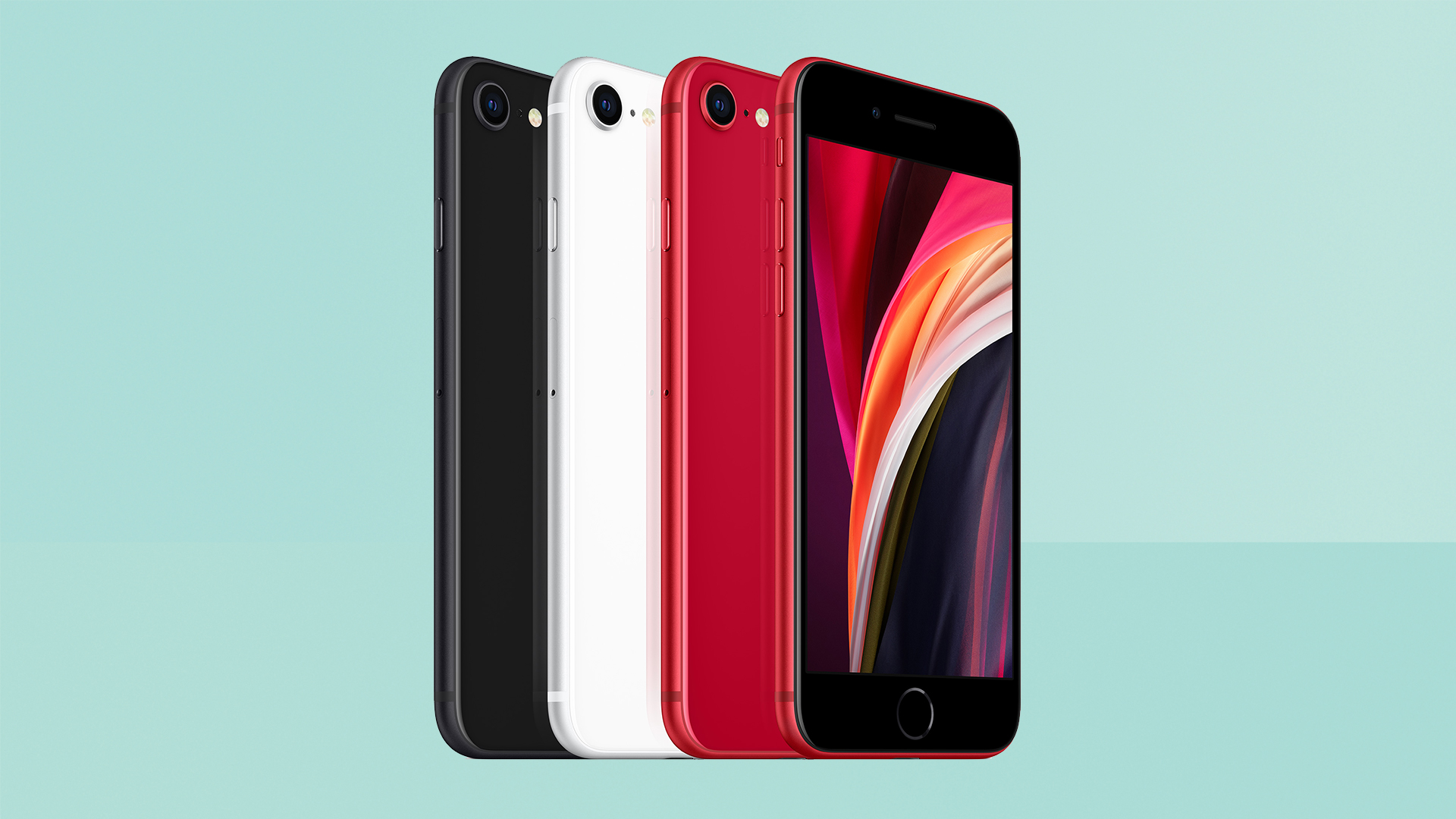
Apple iPhone SE (2020) review: Battery life
Given the smaller screen of the iPhone SE compared to other phones, you might expect a strong showing here – screens are the biggest battery drain for a phone, after all.
But the iPhone SE is pretty average for battery life, all told. It's not bad, but it didn't impress us, either – that came through in real use as well as more intense testing.
Taking it out for about an hour of photography testing reduced the battery life by 12% – that's fairly hardcore usage that involves the screen being on a lot, and lots of processing. And it was also receiving emails and so on during that time.
Based on other testing, it seems to be intense processing that most taxes the battery: running Geekbench 4's battery benchmark (which fires lots of tasks at the phone continuously in a way that's not representative of normal use, but gives us a repeatable examination) took the phone's battery down by 25% in one hour. In comparison, the same test on an iPhone 11 Pro (the closest iPhone in physical size) took the battery down by 15%.
However, when we switch to something less processor intensive and more screen-focused, such as streaming a movie through Netflix, the tables turn. The lower power needed for the iPhone SE's smaller display meant it dropped just 9% after a full hour of Netflix at half brightness, whereas the iPhone 11 Pro dropped 11% playing the same movie (again at half brightness).
These tests backed up what we saw using it in real life – this will get you through a day of use happily, but don't expect more. The bigger iPhones come with bigger batteries and longer life as a result.

Apple iPhone SE (2020) review: Verdict
The iPhone SE is the budget phone we'd recommend to most people: iOS is easy to use and reliable, the phone's powerful processor will keep it relevant for years, the camera is as good as flagship phones that cost twice as much (or more), and the high-quality build is really pleasing just to hold.
It's so close to being a five-star phone – and for some people, it might as well be. Our chief complaints are that the battery life is merely average, that it strangely lacks the useful lock-screen notifications shortcuts feature that other iPhones have, and that there's no Night Mode in the camera (which its primary competitor, the Google Pixel 3a, offers).
We know that lots of people looking at the SE will be light users for whom all of the above just aren't concerns really – everything about it is good enough or better. For those people, it's a superb buy.
It's also worth factoring in Apple's support network – if you do have problems or an accident with the phone, Apple's stores and repair service are second-to-none for fixing things up.
iPhone SE (2020) review: News & Updates
August 2020 – Read our iOS 14 hands-on review to discover the features coming to your iPhone SE in Apple's next update.

Matt is T3's former AV and Smart Home Editor (UK), master of all things audiovisual, overseeing our TV, speakers and headphones coverage. He also covered smart home products and large appliances, as well as our toys and games articles. He's can explain both what Dolby Vision IQ is and why the Lego you're building doesn't fit together the way the instructions say, so is truly invaluable. Matt has worked for tech publications for over 10 years, in print and online, including running T3's print magazine and launching its most recent redesign. He's also contributed to a huge number of tech and gaming titles over the years. Say hello if you see him roaming the halls at CES, IFA or Toy Fair. Matt now works for our sister title TechRadar.
